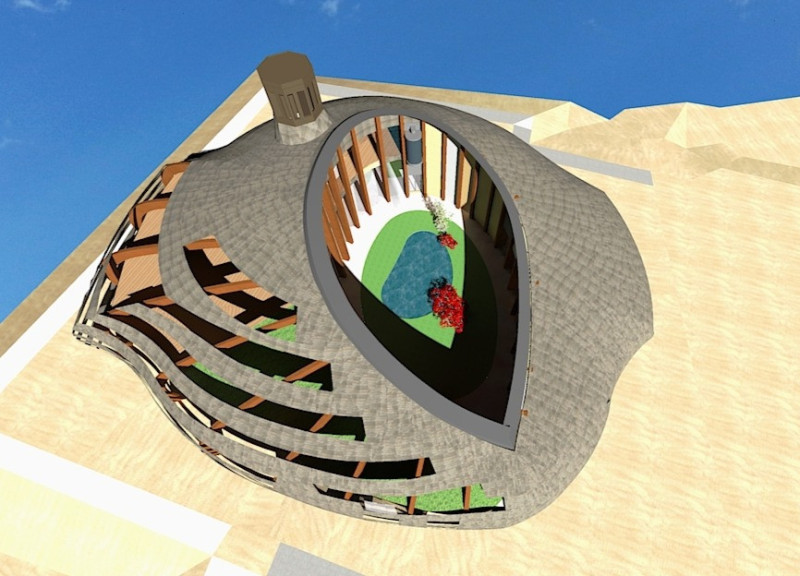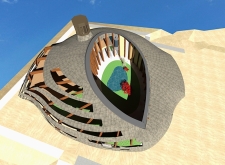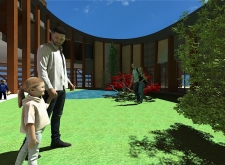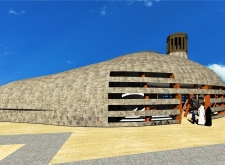5 key facts about this project
The architectural design project presents a contemporary structure that embodies a seamless connection between the built environment and its natural context. This project is characterized by its organic form, which reflects the contours of its surroundings, thus creating a harmonious relationship with the landscape. The building functions as a versatile space suitable for community gatherings, recreational activities, and quiet reflection.
The exterior design utilizes a wrapping droplet shape, which aids in water management and enhances airflow. Materials such as natural stone, wood, glass, and concrete have been selected for their durability and aesthetic qualities. This choice promotes sustainability and ensures the structure’s longevity while maintaining a cohesive dialogue with its environment.
Unique Design Approaches
The project stands out due to its central atrium, which serves as a multifunctional space. This area allows for natural light penetration, creating an inviting atmosphere that encourages social interaction. The use of wooden slats for shading and aesthetic appeal is a notable design decision. Additionally, the incorporation of green roofs and living walls contributes to biodiversity, further anchoring the building within its ecological context.
Moreover, the project's innovative roof design aids in natural ventilation, allowing for passive cooling that reduces the need for mechanical systems. This approach exemplifies a commitment to energy efficiency and environmental responsibility.
Architectural Details and Functionality
The architectural plans feature well-defined spaces, ensuring that each area serves a specific purpose while promoting fluidity throughout the structure. Key elements include the strategic placement of transparent glass walls that enhance visual connectivity with the outdoors. The water feature within the atrium acts as both a focal point and a sensory element, enriching the user experience.
The landscaping around the building is carefully curated to complement the architecture, utilizing native plant species to promote sustainability and minimize maintenance. Overall, the design emphasizes functionality, adaptability, and a commitment to fostering community engagement while respecting environmental integrity.
For further exploration of this project, including detailed architectural plans, sections, and design ideas, readers are encouraged to delve deeper into the presentation for comprehensive insights into its architectural execution.




















































